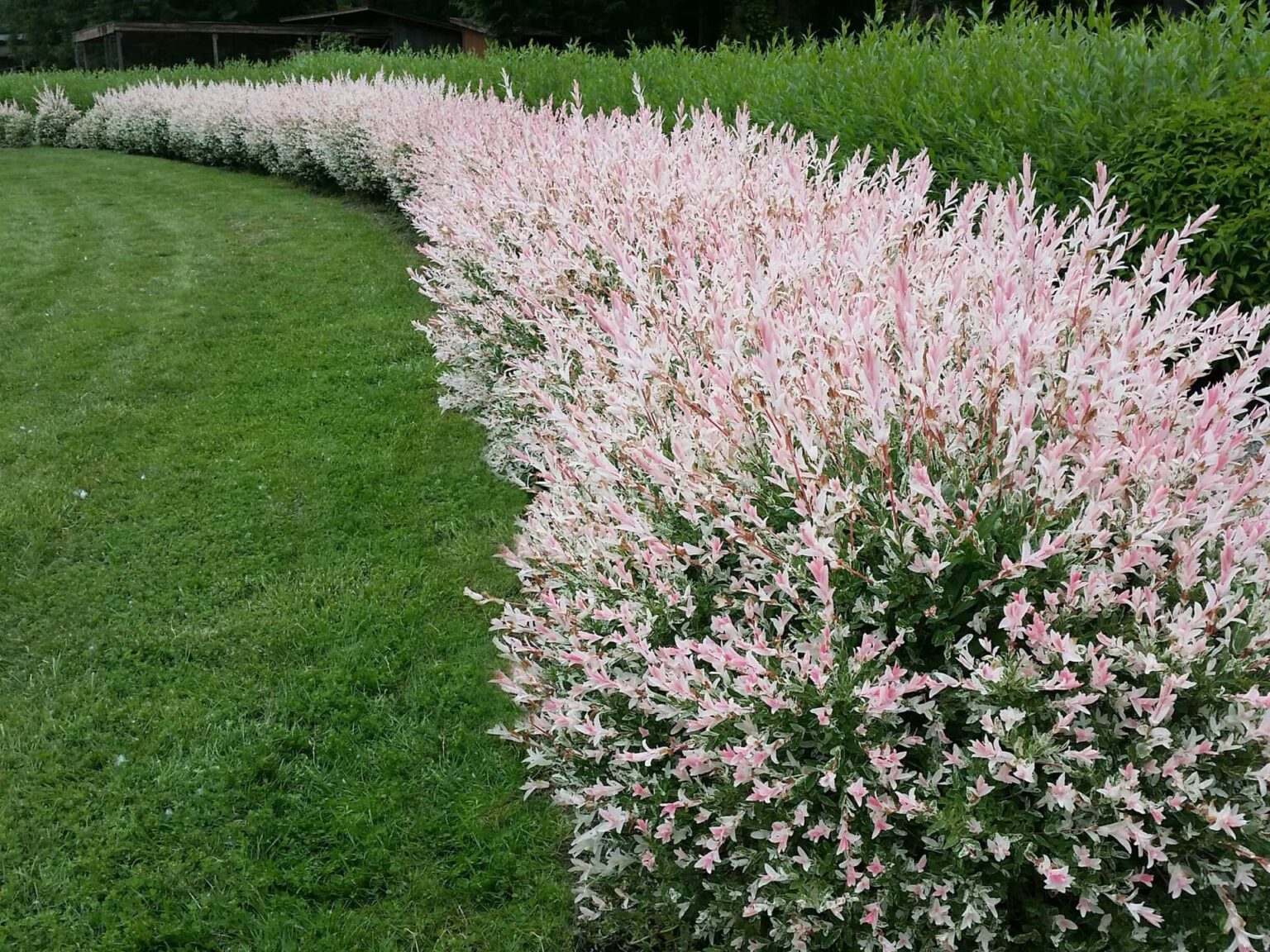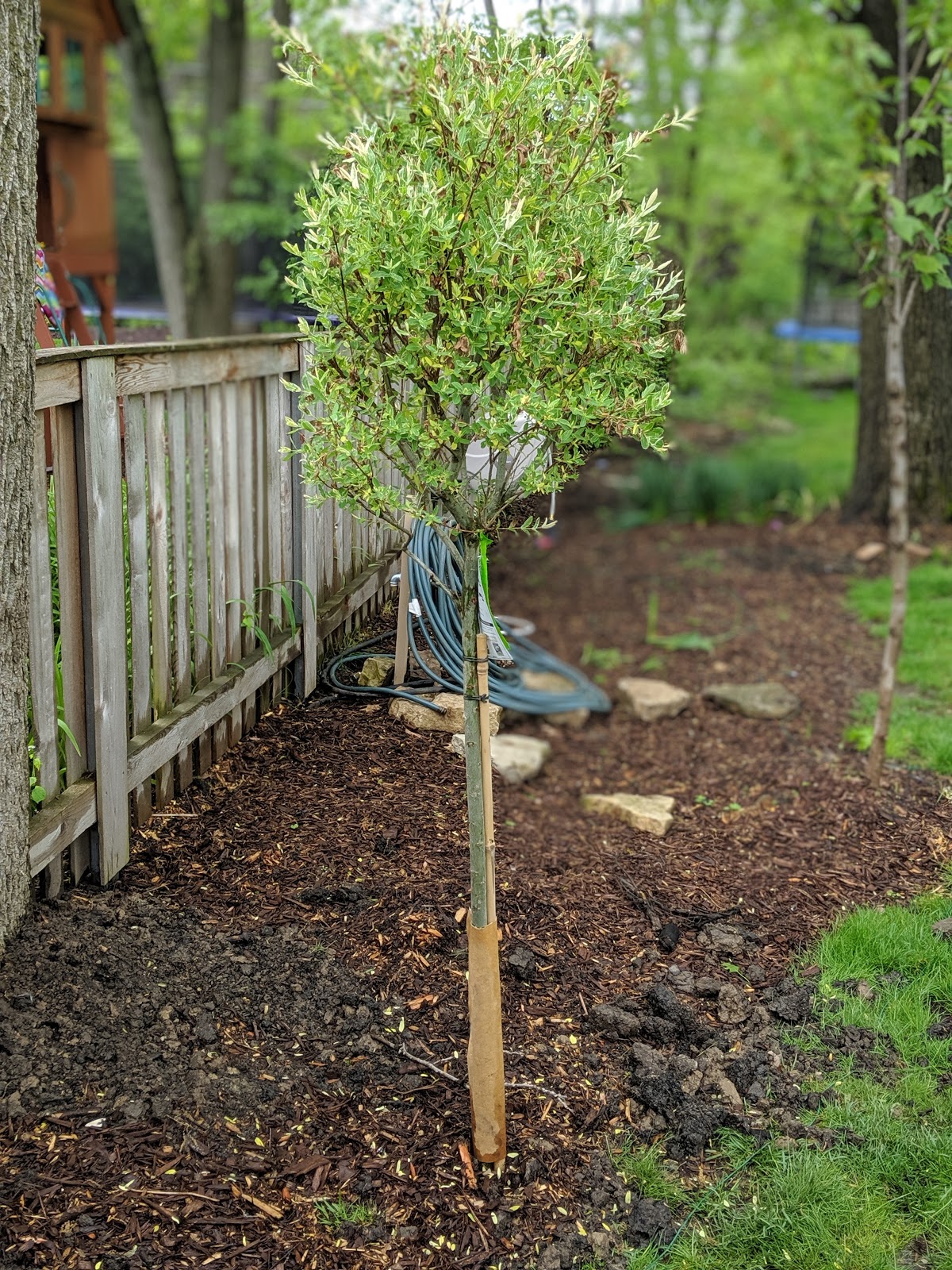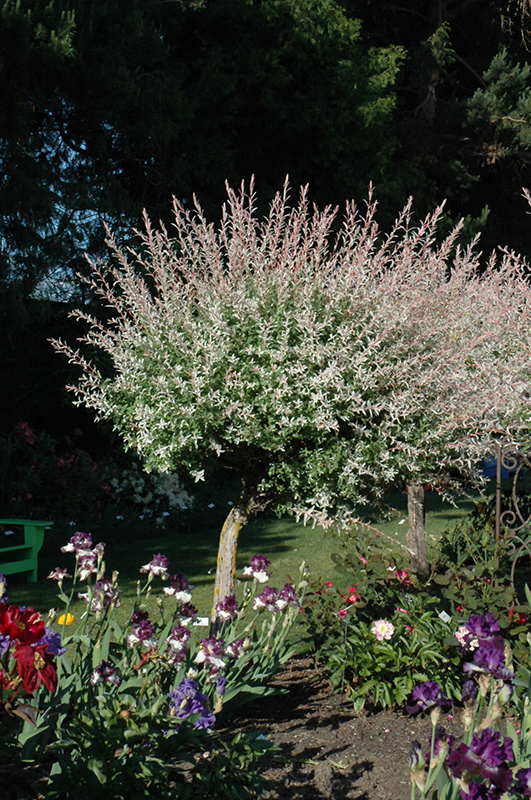Hakuro Nishiki Tree Form
Hakuro Nishiki Tree Form - New foliage emerges pink in spring, maturing to variegated shades of pink, creamy white and green. The slender trunk is topped with pink stems and buds that open to dappled green, pink and white. Specimen, ornamental, rain gardens, containers maintenance: Web dappled willow tree form salix integra 'hakuro nishiki' $54.59 9% off! This is an attractive deciduous shrub or small tree. We can't tell much of a difference between the two cultivars. Willow, hakuro nishiki tree form botanical name: Narrow, medium green with white marbling, pink budding flowering period: Both produce outstanding variegated white, pink and green leaves in spring that mature to green and white during summer. Mid september to october are the best times to plant a salix integra.
The slender trunk is topped with pink stems and buds that open to dappled green, pink and white. Full sun to part shade growth rate: Showy addition to the landscape. Stems turn red in late fall for winter interest. Best foliage color occurs in cool summer areas (north of usda zone 7). Web dappled willow aka salix “hakuro nishiki” is a type of tree native to china, japan, and southeast russia. With its bright pink shoots which open to creamy white and green variegated leaves, dapple willow can become a focal point in any yard. Web salix integra 'hakuro nishiki' common name (s): Leaves appear in opposite pairs or whorls of three which is unusual for a willow which normally has alternate leaves. We can't tell much of a difference between the two cultivars.
The other is salix integra 'flamingo'. Web dappled willow aka salix “hakuro nishiki” is a type of tree native to china, japan, and southeast russia. Prefers full sun, but welcomes some afternoon shade in hot summer areas. Narrow, medium green with white marbling, pink budding flowering period: Web it is an understory species of the shade garden, thriving under canopy trees both evergreen and deciduous. Easy to grow, easy to care for and deer tolerant. Full sun to part shade growth rate: Buds open to variegated green, pink and white foliage, although some leaves could be all white. These are grafted to a compatible, strong and straight growing, upright willow trunk. Web grafted tree form and pruning techniques.
Salix Hakuro Nishiki Spring Meadow wholesale liners Spring Meadow
Narrow, medium green with white marbling, pink budding flowering period: Web 'hakuro nishiki' is one of two popular cultivars of the dappled willow, salix integra. Leaves appear in opposite pairs or whorls of three which is unusual for a willow which normally has alternate leaves. Smaller plants will grow successfully around the base of this shrub if required. This is.
Salix 'Hakuro Nishiki' Variegated Willow (Standard) 12'' Pot Hello
See notes | back to ornamental trees. Sometimes called the dappled willow, it is also available in tree form. This striking tree boasts luminous variegated foliage on graceful branches throughout the growing season. Web grafted tree form and pruning techniques. The other is salix integra 'flamingo'.
Dappled Willow (Hakuro Nishiki) Tree Form Planted 2019
These are grafted to a compatible, strong and straight growing, upright willow trunk. See notes | back to ornamental trees. Web hakuro nishiki is a deciduous flowering shrub that thrives in full sun or partial shade and moist soil. Specimen, ornamental, rain gardens, containers maintenance: This is an attractive deciduous shrub or small tree.
Salix integra 'HakuroNishiki' Tree Ornamental trees, Small front
This is an attractive deciduous shrub or small tree. Web it is native to riverbanks and moist meadows in china, japan, korea and southeastern siberia. With its bright pink shoots which open to creamy white and green variegated leaves, dapple willow can become a focal point in any yard. A lovely tree form of this graceful willow. The slender trunk.
Hakura Nishiki Dappled Willow (tree form) (Salix integra 'Hakuro
The narrow leaves are highly ornamental but do not develop any appreciable fall color. Full sun to part shade growth rate: The drooping form is considered a fluid accent for natural waterways. New foliage emerges pink in spring, maturing to variegated shades of pink, creamy white and green. Web dappled willow tree form salix integra 'hakuro nishiki' $54.59 9% off!
Japanese Dappled Nishiki Willow 3 pot shrub/tree Etsy in 2020
Prefers full sun, but welcomes some afternoon shade in hot summer areas. We can't tell much of a difference between the two cultivars. 150 to 300 cm width: Narrow, medium green with white marbling, pink budding flowering period: New foliage emerges pink in spring, maturing to variegated shades of pink, creamy white and green.
Dappled Willow (Hakuro Nishiki) Tree Form Planted 2019
See notes | back to ornamental trees. Showy addition to the landscape. This striking tree boasts luminous variegated foliage on graceful branches throughout the growing season. Its traditional use is beside streams and water features in asian gardens where, like most willows, it is tolerant of perennial damp and seepage. New foliage emerges pink in spring, maturing to variegated shades.
Willow, Nishiki Dappled Japanese
Web 'hakuro nishiki' is one of two popular cultivars of the dappled willow, salix integra. Prefers full sun, but welcomes some afternoon shade in hot summer areas. Best foliage color occurs in cool summer areas (north of usda zone 7). Salix integra 'hakuro nishiki' sun exposure: Specimen, ornamental, rain gardens, containers maintenance:
Hakura Nishiki Dappled Willow (tree form) (Salix integra 'Hakuro
Specimen, ornamental, rain gardens, containers maintenance: Web dappled willow tree form salix integra 'hakuro nishiki' $54.59 9% off! Prefers full sun, but welcomes some afternoon shade in hot summer areas. Excellent accent or specimen tree, especially in part shade areas. This is an attractive deciduous shrub or small tree.
150 To 300 Cm Width:
We can't tell much of a difference between the two cultivars. Salix integra 'hakuro nishiki' sun exposure: Web plant profile care place planting watering fertilization pruning propagation diseases pests family: Specimen, ornamental, rain gardens, containers maintenance:
0.75 To 130 Cm Shape:
Narrow, medium green with white marbling, pink budding flowering period: Willow, hakuro nishiki tree form botanical name: This plant is loved for its colorful foliage that turns from pink in the spring to white and green in the summer and then yellow in the fall. A lovely tree form of this graceful willow.
Buds Open To Variegated Green, Pink And White Foliage, Although Some Leaves Could Be All White.
New foliage emerges pink in spring, maturing to variegated shades of pink, creamy white and green. Stems turn red in late fall for winter interest. Full sun to part shade growth rate: Easy to grow, easy to care for and deer tolerant.
This Is An Attractive Deciduous Shrub Or Small Tree.
Web it is native to riverbanks and moist meadows in china, japan, korea and southeastern siberia. Showy addition to the landscape. Best foliage color occurs in cool summer areas (north of usda zone 7). Smaller plants will grow successfully around the base of this shrub if required.









